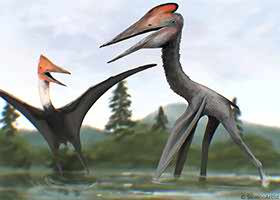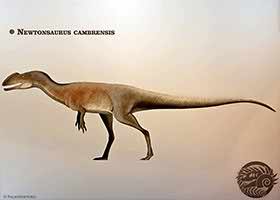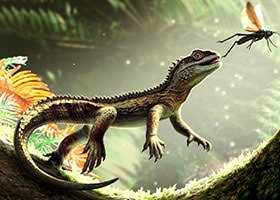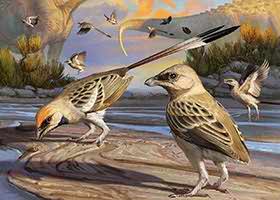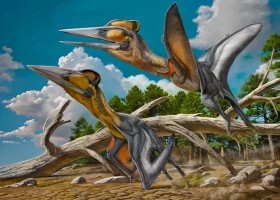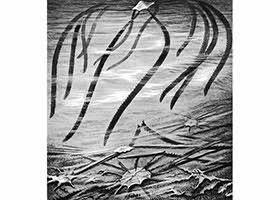
The ancient arthropod fossil Lomankus edgecombei was discovered by a team from the University of Oxford, led by paleontologist Luke Parry, in the famous Beecher’s Trilobite Bed in New York State. This Late Ordovician find is notable for its excellent preservation, as pyrite (known as “fool’s gold”) quickly replaced the organism’s soft tissues.
This is a new genus and species of megacheiran arthropod preserved in 3D in pyrite. Lomankus edgecombei inhabited the Ordovician seas around 450 million years ago (Katian Stage).
Researchers rarely find other species besides trilobites in Beecher’s Trilobite Bed. Pyritization at this site enabled the discovery of the first trilobites with limbs.

Etymology
From the Greek loma (edge, border) and ankos (valley), derived from the meaning of Edgecombe, edge of a valley.
Species name for Gregory D. Edgecombe of London’s Natural History Museum, in recognition of his contributions to our understanding of arthropod evolution.
Class Megacheira

Lomankus edgecombei belongs to the class Megacheira, within the order Leanchoiliida, which was highly diverse during the Cambrian period (538–485 million years ago). Burgess Shale-type deposits show the greatest diversity of these organisms, with six genera representing the family Leanchoiliidae. However, experts largely believed they had gone extinct by the Ordovician period, making Lomankus the first post-Cambrian representative of this family.
Megacheirans had a large modified appendage (one or two) at the front of the body, used for sensing and capturing prey. Such appendages include the antennae of insects and crustaceans, as well as the pincers and chelicerae of spiders and scorpions. One of the key factors in their evolutionary success was the adaptation of the head and its appendages to various tasks and environmental conditions.

Features of Lomankus edgecombei
Most megacheirans used their large first appendage to capture prey, but Lomankus edgecombei features a significantly reduced version of this appendage. Instead, Lomankus had three long, flexible, whip-like flagella at the end of this appendage. This suggests that it used its frontal appendage for sensing the environment rather than for capturing prey. Likely, in the Ordovician, it led a very different lifestyle compared to its more ancient relatives from the Cambrian.
Unlike other megacheirans, it also lacked eyes, which were replaced by this appendage. This allowed it to sense and search for food in a dark, low-oxygen environment. It likely lived in a deeper, darker benthic niche in the Late Ordovician than its Cambrian predecessors.

Right: Morphology of the head region and great appendage of Lomankus edgecombei, phylogeny, and life reconstruction. (A–C) YPM IP 236743. (A) Right lateral view, RTI image using diffuse gain rendering; (B and C) CT reconstruction, ventrolateral view. (D–F) YPM IP 256612. (D) Ventral view, RTI image using diffuse gain rendering; (E and F), CT reconstruction, ventral view.
The elongated body of this small arthropod is divided into a head, a segmented trunk, and a telson. In the sub-triangular cephalic region, in addition to a short, large appendage, there were four biramous appendages. The trunk had 11 segments, each with biramous limbs. The telson is elongated and triangular without bordering spines. It gradually tapers and extends into a long, whip-like tail that exceeds the length of the body.
Published in Current Biology magazine:
Luke Parry et al., 2024. A pyritised Ordovician leanchoiliid arthropod.












